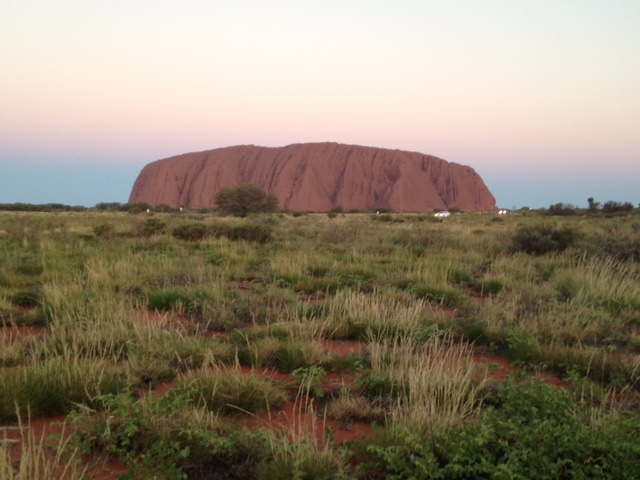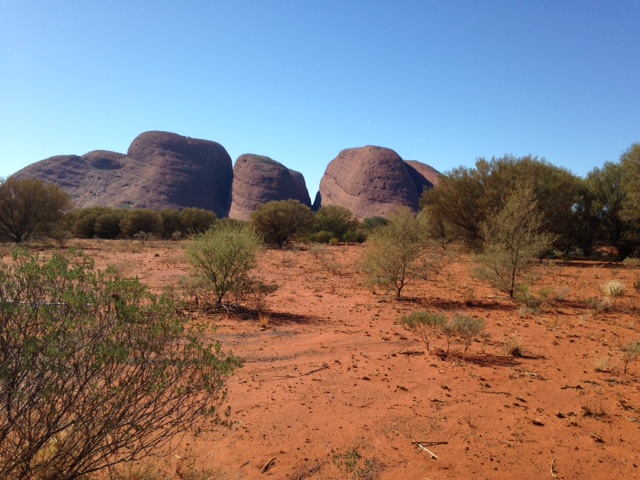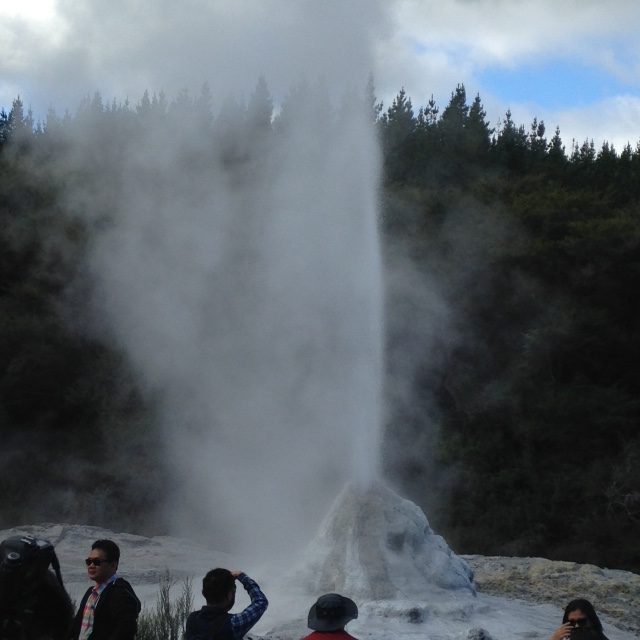It was 7 in the morning, the city was waking up, getting itself ready for the day, the radio was announcing weather forecast for the day, and we were leaving Sydney after leading a nomadic life for three weeks in New Zealand and Australia. We were returning home, to Boston.
As the mind was still feeding upon the last glimpses of this big city, it was also thinking that this is a typical pattern of a fast paced modern life one can find anywhere in the world in big cities like London, New York, Los Angeles, Mumbai or some other city. At the same time, another picture, the picture of a place called Ayers Rock in Australia, that we left a few days back, was emerging at the back of the mind, where even in the middle of the day the variety, the complexity, and the speed of life is nowhere close to what one sees in Sydney even in the very early hours of the day.
Ayers Rock is a very small town with a large land area that the Australian government returned to the aborigines, the Anangu people, of the land some thirty years ago, and in return, leased it from them for 99 years for tourism purposes. Many people from all over the world come to this small place in the middle of a vast desert land in central Australia.

Uluru (Australia)
So, what is so interesting and sacred about Ayers Rock? It is a 600 million years old monolithic, sandstone rock, also called ‘Uluru’ by the Anangu people, which is about 348 meters high, more than 2 kilometers deep inside the earth, and about 9 kilometers in parameter around the base. The rock is of interest to both the ancients as well as to the moderns: For the ancients and indigenous, the rock is a symbol of a form of human life and culture developed around it; and for the moderns because of its age, geological formation, and the challenge it poses to rock climbers. It is one of the UNESCO World Heritage areas for its natural as well as cultural value.
Just about 50 kilometers away from Uluru, there is another equally old and interesting rock formation called Kata-Tjuta, usually known as Mount Olga by its tallest rock of about 546-meter height, that has 36 domes. The aborigines believe that these are 36 heads buried and is a sacred site for men.

Kata-Tjuta (Australia)
Aside from being reminded of its sacred value during the trip to Ayers Rock, it was also repeated multiple times that the indigenous people have a very spiritual relationship with this land. This insistence on ‘spiritual’ made me wonder about the reason as to why such high regards for a rock and the land around it? What is it that the aborigines see in it that others don’t? Why is it that while one set of people look up to the rock so reverently, the other group of people defile the place; they not only climb up but also defecate and leave their rubbish behind which then flows down with rain water, polluting the water holes around the rock?
And then suddenly it occurred to me that there is every reason for Anangu to relate to the place in a reverential manner, as the rock and the land supported the life of the aborigines for many thousands of years. When the ancestors of these people landed in this area, searching for a hospitable place in the middle of the desert, the rock provided them a station with ample water, and vegetation and animals for food. While men would go to hunt, women would collect berries and fruits.
The rock allowed them to organize their life in a manner supporting social life. There are sites around the rock where only women or men could meet. Women were not allowed in men’s areas and vice versa. If a man happened to come across a women’s area, he was, and still is supposed to bow his head, look to the ground and walk past the area as quickly as possible. There is a site for elders or wise men to meet. The rock is also the place where grandparents took care of grandchildren and passed their tradition and tribal laws to the future generations. Several thousand-year-old rock paintings in this area suggest that their ancestors tried different modes of self-expression here. They have their creation myths and legends, now known as Dreamtime, tied to this rock. These stories seem very rudimentary when compared to the myths of higher religions but, nonetheless, enough to support a life form for 20-40,000 years.
Another reason for sacred feelings for the rock could be that it generates awe due to its size and magnificent presence in the middle of nowhere, an arid flatland with some very low dune like structures. In ancient times, when humans had very little knowledge of the world, a massive structure like this in a lonely, isolated place could have conveyed a sense of miracle and a special message to these people that attracted them to the site from a distance and settle around it.

Wai-o-tapu (New Zealand)
The ideas of sacred and profane reside in our heads. With feeling of sacredness a special type of relationship humans establish with a thing, place or an event. Taboos are the rules that define such relationship allowing what one can or cannot do to these objects of reverence, based on some value we perceive in them.
Sites like Uluru and Wai-o-Tapu suggest that what supports life is considered sacred. For the same reason, in India, we have similar feelings of sacredness toward some of our major rivers such as Ganges or Kaveri. It is the same rock, Uluru, that some consider sacred while the others do not. Those who do not see their life being supported or governed by such places will not be able to marshal the feeling of sacredness toward them. Out of respect for their fellow beings, they may not defile them but they will not have the same feelings that the Anangu or Maoris have for these rocks and waters.
It is sometimes said that the modern man is losing the sense of what is sacred. Technology and the pace of modern life do not allow people to connect with the world, see something sacred in it, and develop a spiritual relationship with it as the aborigines did with their land. But such observations are not totally correct. We too have our own sites where we feel comfortable, relaxed, relieved of pressures of life and rejuvenated. The parks, lakes, rivers, forests or mountains that we visit frequently, we may not call them sacred but we are very sensitive to such places being defiled or destroyed, do everything possible to discourage such activities, and spend substantial amount of time and funds to maintain them in as pristine and natural a condition as possible. An honest look at any of the national parks, whether in the U.S. or New Zealand or Australia, clearly shows how good people feel about them and how much of national pride they derive from them. Both in New Zealand as well as in Australia people are happy to mention that these parks are their national heritage, where thousands of species of animals and plants thrive in an ecosystem. Just like Uluru and Wai-o-Tapu that supported ecosystems allowing human life to thrive around them, these parks, rivers and mountains are sacred to us.

